Introduction
Growing your own dragon fruit (also known as pitaya) at home is not only rewarding but also surprisingly easy. With its exotic look, vibrant pink fruit, and nutritious value, dragon fruit has quickly become a favorite among home gardeners. This tropical cactus is a low-maintenance plant that thrives in warm climates and adapts well to containers, making it ideal for patios, balconies, or sunny indoor spots.
Whether you’re a seasoned gardener or a complete beginner, this comprehensive guide will walk you through everything you need to know to successfully grow a dragon fruit plant at home — from planting and care to harvesting sweet, juicy fruit.
What Is Dragon Fruit?
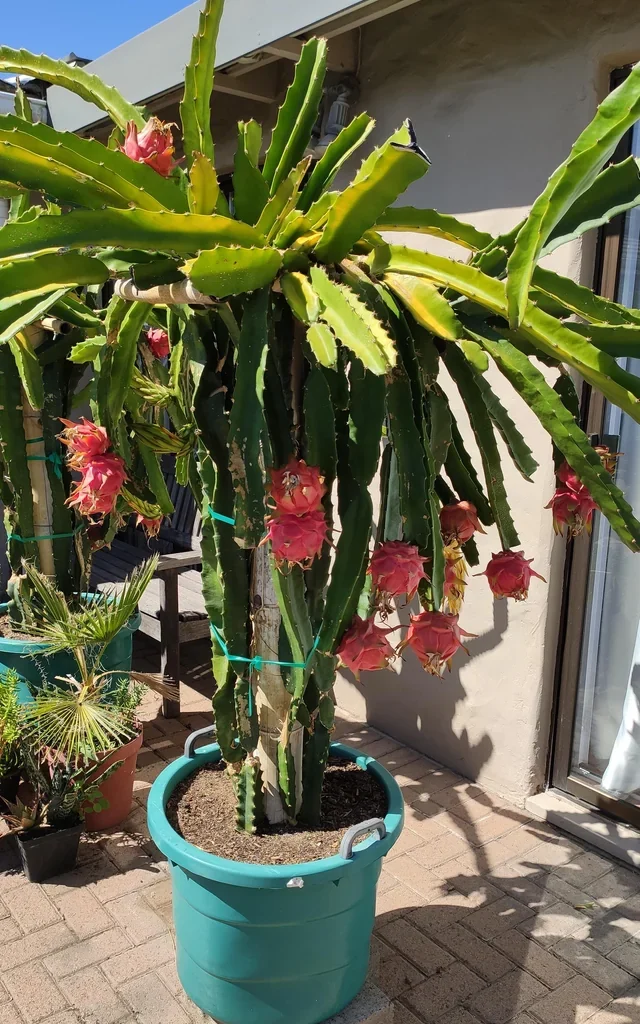
Dragon fruit is the edible fruit of several different cactus species, most commonly Hylocereus undatus, Hylocereus costaricensis, and Hylocereus megalanthus. Native to Central and South America, dragon fruit is now grown in tropical and subtropical regions worldwide.
It is easily recognized by its:
- Bright pink or yellow skin
- Green, scale-like flaps
- White or red flesh with tiny black seeds
- Mild, sweet flavor similar to kiwi and pear
Why Grow Dragon Fruit at Home?
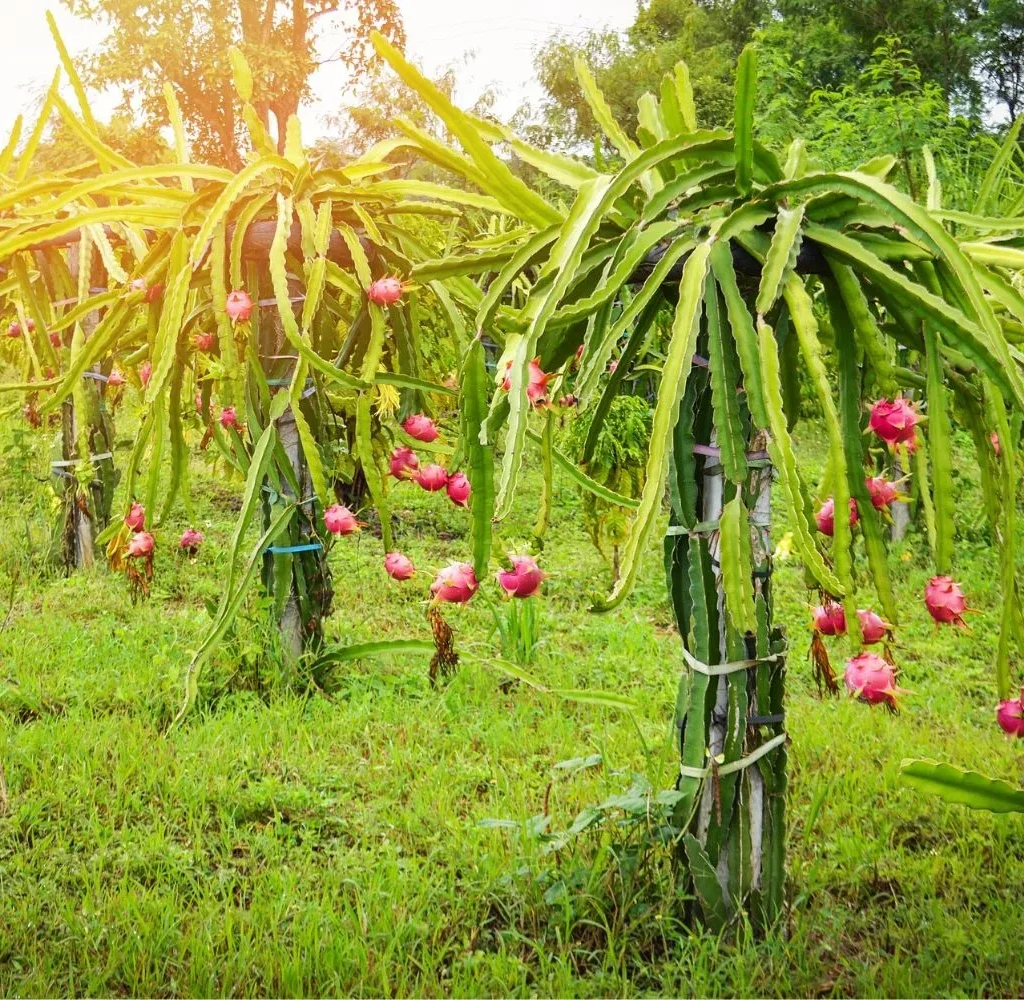
There are several reasons to grow dragon fruit at home:
- Low Maintenance: Requires minimal watering and thrives in poor soil.
- Beautiful Appearance: The plant produces stunning night-blooming flowers.
- Nutritious Fruit: High in antioxidants, fiber, and vitamin C.
- Space-Saving: Grows well in pots and vertical gardens.
- Cost-Effective: Buying dragon fruit regularly can be expensive; growing your own saves money.
Step-by-Step Guide to Growing Dragon Fruit at Home
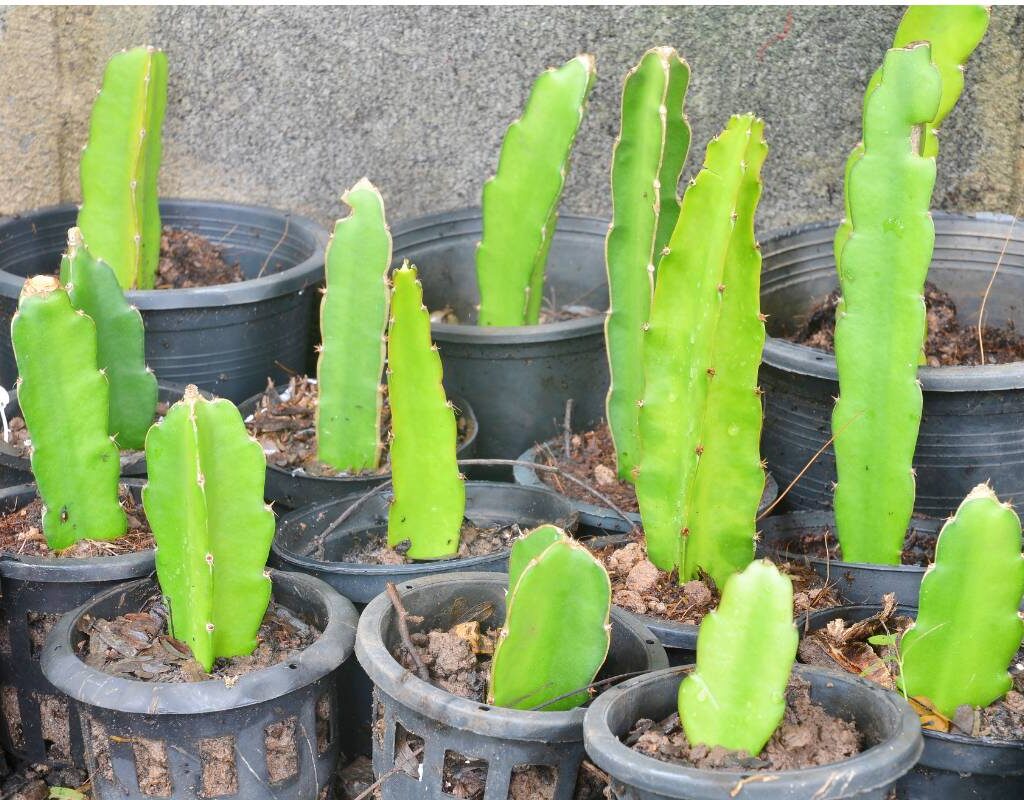
1. Choosing the Right Variety
There are three main types of dragon fruit to choose from:
| Variety | Skin | Flesh | Flavor |
|---|---|---|---|
| Hylocereus undatus | Pink | White | Mild-sweet |
| Hylocereus costaricensis | Pink | Red | Rich-sweet |
| Hylocereus megalanthus | Yellow | White | Very sweet |
For beginners, Hylocereus undatus is recommended because it’s widely available and easy to care for.
2. Selecting a Growing Method
You can grow dragon fruit from:
Seeds
- Extract seeds from a fresh fruit.
- Rinse and dry them on a paper towel.
- Sow them in moist cactus soil.
Note: Growing from seed takes longer (2–3 years for fruit).
Cuttings (Recommended)
- Use a 12–18 inch healthy cutting from a mature plant.
- Let it dry for 2–3 days to form a callus before planting.
- Cuttings yield fruit much faster (12–18 months).
3. Choosing the Right Container or Location
Dragon fruit plants need:
- Plenty of sunlight: At least 6–8 hours daily.
- Good drainage: Use cactus mix or sandy soil.
- Vertical support: A trellis, pole, or wall for climbing.
Container Guidelines:
- Minimum 15-20 gallons in volume.
- Drainage holes are essential.
- Use terracotta or plastic pots for better airflow.
4. Planting the Dragon Fruit
Steps:
- Fill your container with well-draining soil (50% cactus soil + 25% compost + 25% sand/perlite).
- Insert the cutting 2–3 inches deep in the soil.
- Place a stake or trellis immediately to guide vertical growth.
- Water lightly after planting.
5. Watering and Feeding
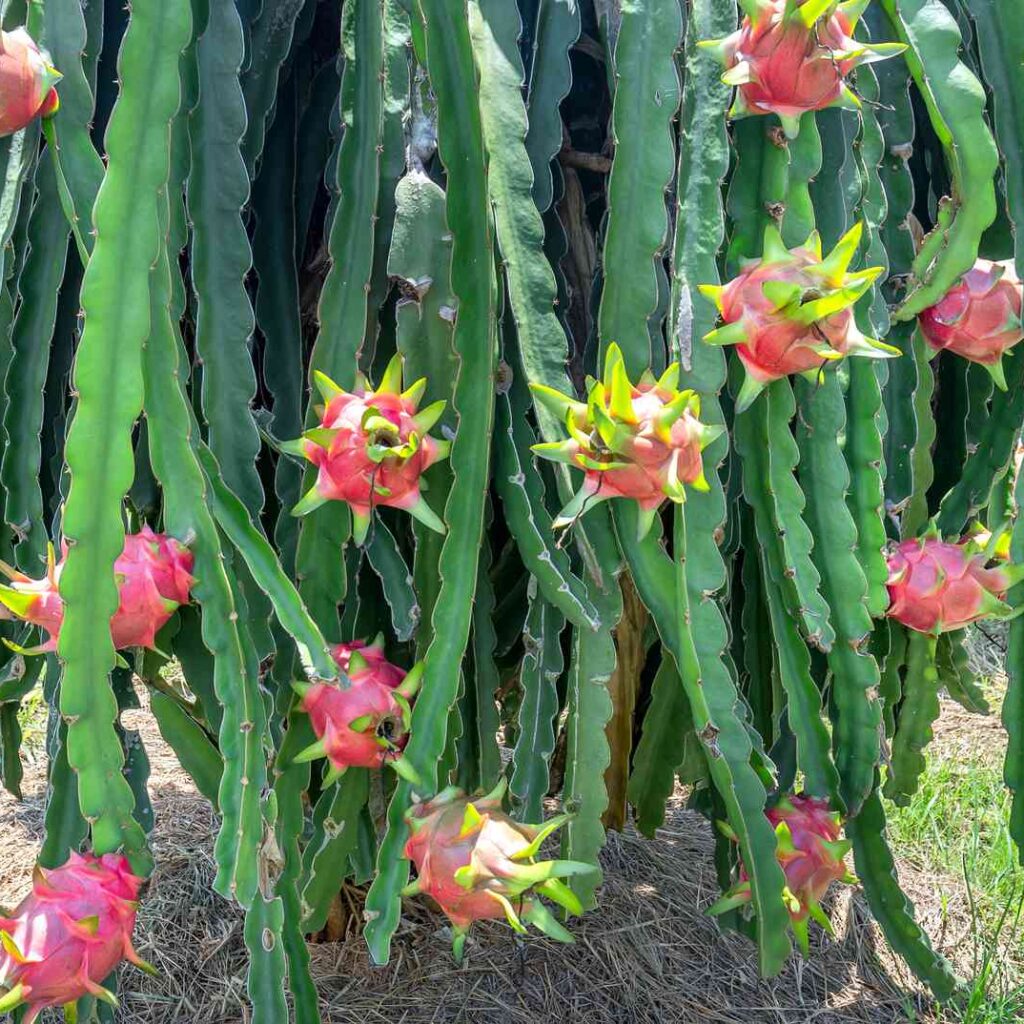
Watering Tips:
- Water only when the top 1–2 inches of soil are dry.
- Overwatering leads to root rot — let the soil dry between watering.
- During winter, reduce watering significantly.
Fertilizing Tips:
- Use a balanced 10-10-10 fertilizer every 4–6 weeks.
- Supplement with compost or manure for natural nutrients.
- Avoid high-nitrogen fertilizers (it boosts leaves, not fruits).
6. Pruning and Maintenance
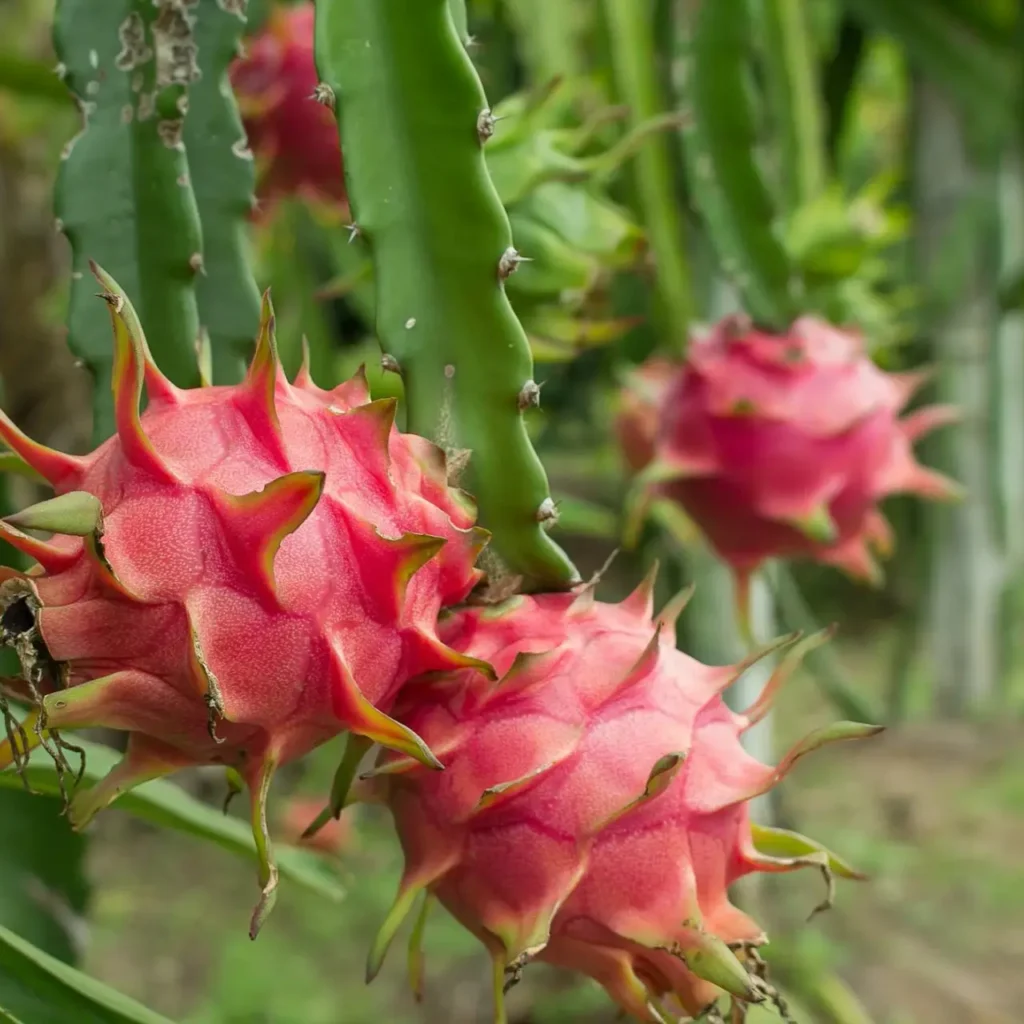
Prune regularly to:
- Remove overcrowded or weak stems.
- Encourage airflow and reduce disease.
- Maintain a manageable size for containers.
Trellising: As a climbing cactus, dragon fruit benefits greatly from a vertical trellis or post. Tie the stems gently using plant ties.
7. Pests and Diseases
Dragon fruit is generally pest-resistant, but you may occasionally encounter:
| Problem | Solution |
|---|---|
| Aphids or ants | Spray with neem oil or insecticidal soap |
| Mealybugs | Remove manually or use alcohol-soaked cotton swabs |
| Root rot | Improve drainage and reduce watering |
| Snails/slugs | Use crushed eggshells or slug traps |
Regularly inspect your plant and act early to prevent infestations.
8. Flowering and Pollination
Dragon fruit plants bloom only at night and the flowers wilt by morning. The blooms are large, fragrant, and absolutely stunning.
Tips:
- Some varieties are self-pollinating, while others need hand pollination.
- To ensure fruit set, use a small brush to transfer pollen between flowers at night or early morning.
- Flowers appear in spring and summer, followed by fruit in 30–50 days.
9. Harvesting the Fruit
Signs that your dragon fruit is ready:
- Bright, even-colored skin.
- Slight give when pressed gently.
- Wing-like flaps turning brown or drying.
Use scissors to cut the fruit from the stem. Always harvest carefully to avoid damaging the plant.
Bonus: Tips for Better Yield
- Temperature: Ideal range is 18°C–32°C (65°F–90°F).
- Sunlight: Full sun is best; partial shade can delay fruiting.
- Spacing: If growing multiple plants, keep 2–3 feet between them.
- Winter Care: In colder regions, move containers indoors or cover them.
Health Benefits of Dragon Fruit
Aside from being delicious, dragon fruit offers:
- Rich antioxidants for immune support.
- High fiber for digestion.
- Low calories and fat.
- Natural hydration (90% water).
- Vitamin C, calcium, iron, and magnesium.
Incorporating this fruit into your diet helps boost wellness and energy.
Conclusion
Growing a dragon fruit plant at home is a delightful gardening project with amazing rewards. Its unique appearance, minimal care needs, and sweet, nutritious fruit make it a standout addition to any home garden. Whether you’re growing from seed or cutting, in a container or garden bed, this step-by-step guide equips you with all the knowledge to succeed.
So why wait? Start growing your own dragon fruit plant today and enjoy tropical treats straight from your garden — no farm or backyard required!
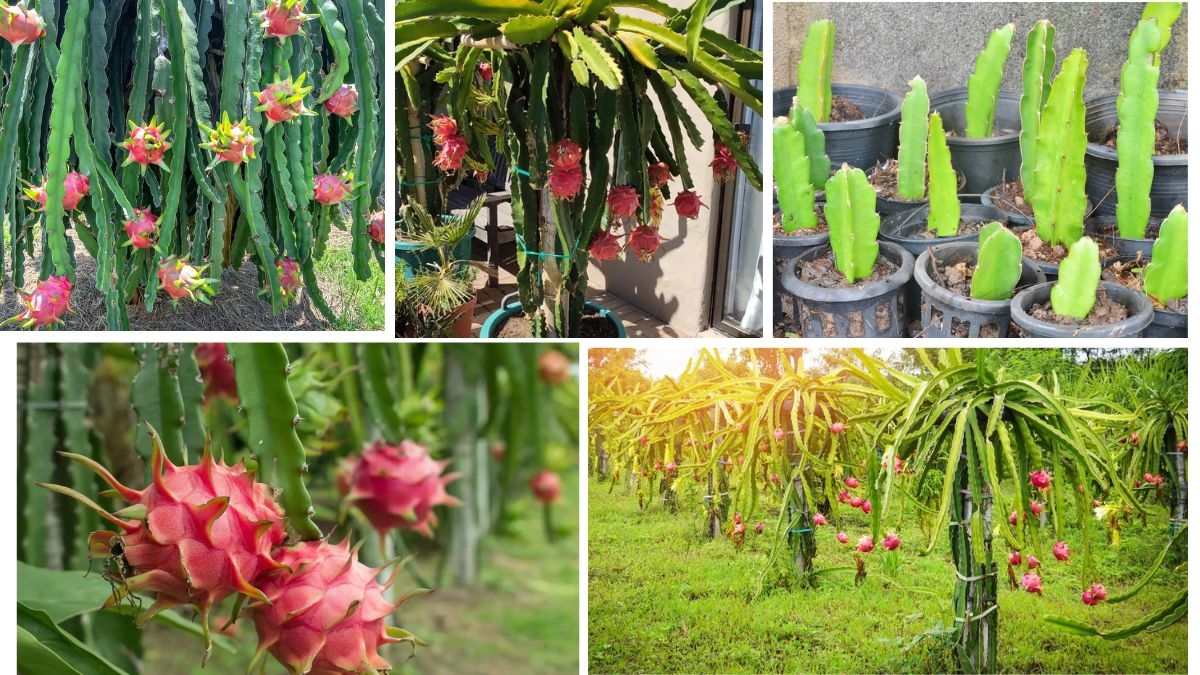


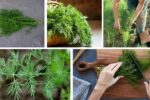
Leave A Comment